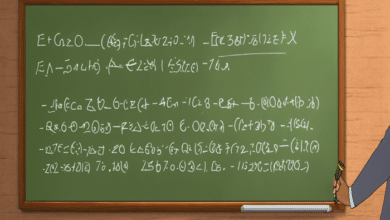
Introduction
The concept of .99 math is a fascinating aspect of pricing strategies that many businesses use to attract customers. By ending prices in .99, companies leverage psychological principles to influence consumer behavior. This blog post delves into the intricacies of .99 math, exploring its history, benefits, and the reasons behind its widespread adoption.
The History of .99 Pricing
The roots of .99 math can be traced back to the late 19th century when retailers began using fractional pricing to increase sales. The theory was simple: a price ending in .99 seemed significantly lower than a rounded dollar amount, prompting more purchases. Over time, .99 math became a standard practice in various industries, cementing its place in modern pricing strategies.
The Psychology Behind .99 Math
.99 math taps into the psychological principle known as the “left-digit effect.” Consumers tend to focus more on the leftmost digit of a price, perceiving a product priced at $9.99 as significantly cheaper than one priced at $10.00. This perception leads to a higher likelihood of purchase, making .99 pricing an effective sales tactic.
How .99 Pricing Affects Consumer Behavior
Research shows that .99 math influences consumer behavior by creating a sense of value and urgency. When shoppers see prices ending in .99, they often perceive them as bargains, even if the difference is minimal. This perception can lead to increased sales and higher customer satisfaction.
The Benefits of Using .99 Math for Retailers
For retailers, the benefits of .99 math are clear. By employing .99 pricing, businesses can attract more customers, boost sales, and create a competitive edge. Additionally, .99 prices can enhance the perceived value of products, encouraging repeat purchases and brand loyalty.
The Criticisms of .99 Pricing
Despite its advantages, .99 math has its critics. Some argue that .99 pricing can be deceptive, leading customers to believe they are getting a better deal than they actually are. Others believe that this pricing strategy can undermine consumer trust in the long run. It’s important for businesses to balance the benefits and potential drawbacks of .99 math.
.99 Math in Different Industries
.99 math is not limited to retail. Various industries, including hospitality, entertainment, and services, use .99 pricing to influence consumer decisions. For example, restaurants often price menu items ending in .99 to make dishes appear more affordable, while movie theaters use .99 pricing for tickets and concessions.
The Role of .99 Math in E-Commerce
In the world of e-commerce, .99 math plays a crucial role in pricing strategies. Online retailers leverage .99 pricing to enhance the perceived value of their products and drive sales. By strategically setting prices ending in .99, e-commerce businesses can attract price-sensitive shoppers and increase conversion rates.
.99 Math and Promotional Pricing
Promotional pricing often incorporates .99 math to maximize its effectiveness. Sales events, discounts, and special offers frequently feature prices ending in .99 to entice customers. This approach not only highlights the discount but also reinforces the perception of getting a great deal.
The Future of .99 Pricing
As consumer behavior continues to evolve, so too will the strategies behind .99 math. Advances in technology and data analytics are enabling businesses to refine their pricing tactics, making .99 pricing more targeted and effective. The future of .99 math lies in its ability to adapt to changing market dynamics and consumer preferences.
Practical Tips for Implementing .99 Math in Your Business
For businesses looking to implement .99 math, there are several practical tips to consider. First, understand your target audience and their shopping behaviors. Use .99 pricing strategically across your product range, ensuring it aligns with your overall brand image. Monitor the effectiveness of your .99 pricing strategy and be prepared to adjust based on customer feedback and sales data.
Conclusion
The world of .99 math is a complex and fascinating aspect of pricing strategies that significantly impacts consumer behavior. By understanding the principles behind .99 pricing, businesses can leverage this tactic to enhance their sales and customer satisfaction. While .99 math has its critics, its effectiveness in influencing purchase decisions makes it a valuable tool for retailers across various industries.
FAQs
1. What is .99 math?
.99 math refers to the pricing strategy where prices end in .99, leveraging psychological principles to influence consumer behavior and perceptions of value.
2. Why do retailers use .99 pricing?
Retailers use .99 pricing to create a perception of value and affordability, encouraging more purchases and boosting sales.
3. How does .99 pricing affect consumer behavior?
.99 pricing affects consumer behavior by making products appear cheaper than they are, prompting a higher likelihood of purchase due to the left-digit effect.
4. What are the criticisms of .99 pricing?
Criticisms of .99 pricing include potential deception, undermining consumer trust, and the perception of manipulating customers into thinking they are getting a better deal.
5. Can .99 math be applied to online businesses?
Yes, .99 math is widely used in e-commerce to attract price-sensitive shoppers and enhance the perceived value of products, driving higher conversion rates





